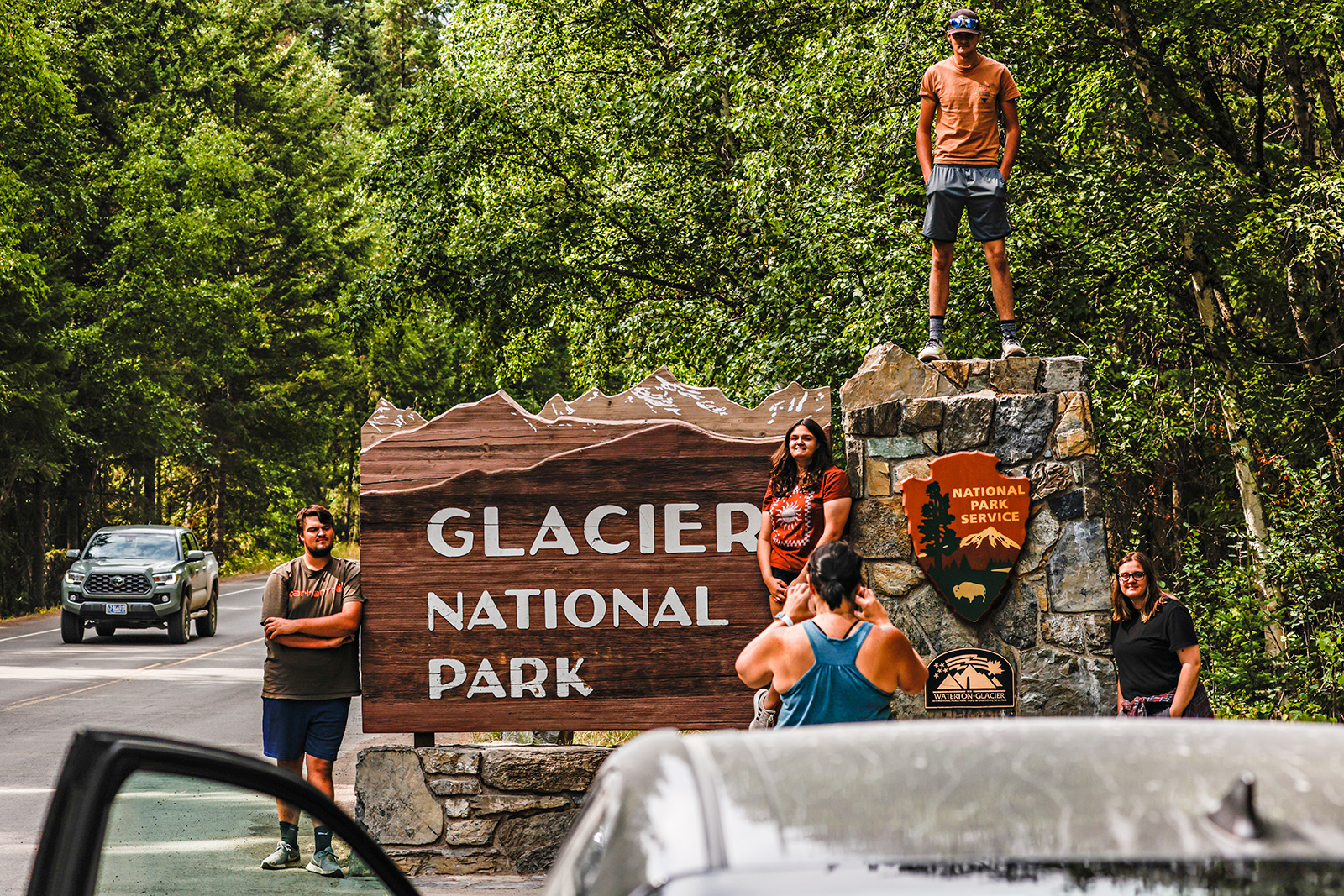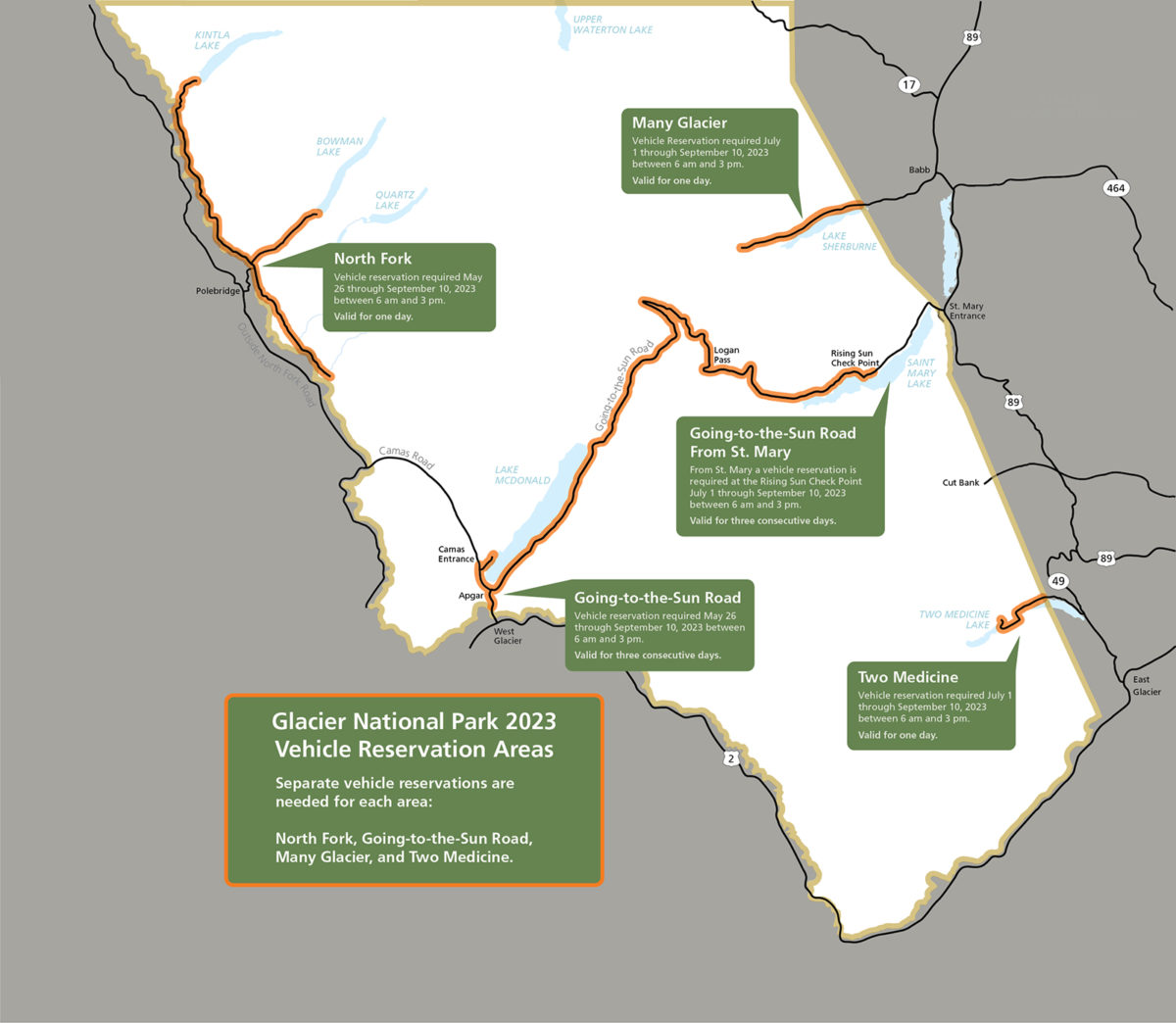Despite Extended Sun Road Season, Glacier Park Visitation Remained Stable in 2023
More than 2.9 million people visited the park through November, barely surpassing last year’s totals despite one of the earliest openings and latest closures of the Going-to-the-Sun Road in recent history
By Tristan Scott
Many Glacier before Mother’s Day? Logan Pass sunsets in early June? Scenic Sun Road drives in mid-October?
Such were the silver-lining entitlements that a record-low snowpack and high spring temperatures bestowed on Glacier National Park visitors in 2023, leading to one of the longest Going-to-the-Sun Road seasons in recent memory after the alpine highway’s full 50-mile stretch opened to motorized traffic on June 13 — a month earlier than last year’s season opener and the earliest opening date since 2005. And with the entire length of the Sun Road remaining open until Oct. 16 due to an unseasonably warm fall, visitors were afforded ample opportunities to traverse Glacier National Park’s high country for more than four months.
And yet, year-to-date visitation figures are nearly identical to 2022, with park officials reporting a 0.46% increase in overall visitation during the first 11 months of 2023, which includes a summer season that saw implementation of the most comprehensive vehicle-reservation system in the park’s history.
Over the past two decades, annual visitation at Glacier National Park has increased from approximately 1.5 million to over 3 million visitors, most of them concentrated along the Going-to-the-Sun Road corridor and other front-country destinations during the peak season of June through September, creating severe congestion at the park’s most popular entrances.
Despite that reservation requirement, which this year expired on Sept. 10 and has existed during the summer months in some form or another since 2021, more than 2.9 million people visited Glacier Park through November. According to the park’s visitation statistics, approximately 22,683 visitors came to Glacier in November 2023, or 8.46% (about 1,500) more than the same month last year.
Spanning the Continental Divide at Logan Pass, the Going-to-the-Sun Road runs between park entrances in West Glacier and St. Mary and functions as the park’s main ventricle. But its opening and closing dates are conditioned on Mother Nature, requiring months of snow removal and maintenance before it can safely usher visitors to its upper reaches.

“There are always a number of variables that contribute to our visitation trends, and weather is certainly one of those factors,” Gina Icenoggle, the park’s public information officer, said Wednesday. “If it’s raining, then the numbers are usually down in the shoulder seasons, especially before the road is open all the way. But this year was one of the earliest openings on record, and since we didn’t have a season-ending weather event that closed the Sun Road early we were able to keep it open until the third Sunday in October, which hasn’t been possible the last few years. But even with those factors, the difference in visitation was negligible.”
Visitation statistics still aren’t tallied for December, and even with the winter closure of the Sun Road in place, visitors may still drive 10 miles along the Going-to-the-Sun Road from the West Entrance to Lake McDonald Lodge, and six miles from the St. Mary Entrance to Rising Sun. Hiker and biker access is also permitted past the vehicle closures as far as the closure signs indicate for road crew activity and road conditions. Still, the 2023 total is unlikely to surpass 3 million.

But Glacier National Park officials haven’t only been tabulating the number of visitors who converged on the Crown of the Continent during one of the longest visitation seasons in recent history, they’ve also been gleaning valuable insight about visitation patterns to inform future protocol as they prepare for the fourth consecutive year of a vehicle reservation system. Those include using QR codes embedded in the vehicle reservation ticket to determine how many days unique visitors are spending in Glacier.
Indeed, visitors to Glacier National Park in 2024 will again be required to have a vehicle reservation to access the most popular areas, but the scope of the pilot program has been scaled back.
For example, as opposed to this summer, when vehicle reservations were required to access all six main entrances to the park, visitors will only need advanced reservations to access the North Fork area at Polebridge, the Many Glacier Valley and the West Glacier entrance to the Going-to-the-Sun Road. Also new in 2024, vehicle reservations will be valid for one day only, down from three days in 2023.

According to Icenoggle, data from 2023 indicates that only 2% of three-day reservations were used for all three days, while approximately 80% of visitors spent just one day in the park. By changing to a one-day reservation, consistent with other park areas, a greater number of reservations can be made available.
The vehicle reservation system was first implemented in 2021 to relieve congestion from pandemic-era visitation records that saw many park entrances temporarily restrict access due to overcrowding. Each year, park officials have revised the pilot system based on feedback from local communities, visitor surveys and data, which this summer included hosting a trio of civic-assessment sessions in August and collecting 1,408 written comments.
The 2023 system was the most comprehensive version of the pilot program — with all entrances to the park included — but park data showed an overall increase in visitation compared to the previous summer despite the increased restrictions. Icenoggle said the reservation system was engineered to more evenly distribute visitors across the park’s 1-million-acre footprint so as to avoid the kind of congestion that had become commonplace at certain points of the day, as well as damages to the park’s natural resources.
“Each year we have adapted the reservation pilot system and from the beginning those decisions have included feedback from the public,” Icenoggle said. “But our core responsibility is to manage the park in away that protects resources and provides the highest value to our visitors.”

When the park first began piloting a vehicle reservation system in 2021, Icenoggle said “we were on ground zero” and administrators were “in triage mode” as they worked to ease gridlock traffic congestion that had been building for years.
“Before, we only had a blunt tool. If we got major congestion on the Going-to-the-Sun Road and couldn’t get safety vehicles in or out, then we swung the gates and closed the affected entrance,” Icenoggle said. “But from the first day of the pilot reservation system we have been able to gradually expand our toolbox and sharpen those tools, and over the last few years we have made adjustments and really begun to refine the system.”
This year, Glacier Park officials also appeased some critics of the reservation system by announcing its details earlier than in years past, while also moving vehicle filter stations and check points beyond Apgar Village to accommodate day-trippers who wish to visit the shore of Lake McDonald without a reservation.

“The public reception of the announced changes to 2024 have been positive overall, with our elected leaders and business stakeholders telling us that they appreciate the timing of our announcement [regarding upcoming changes to the reservation system], which was made a full month earlier than last year,” Icenoggle said. “We also eased up on reservation requirements on the east side, and the public is becoming more experience with how to navigate the system. Our visitors have been on a learning curve right along with us.”